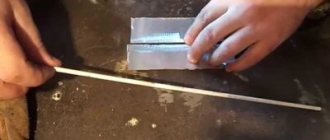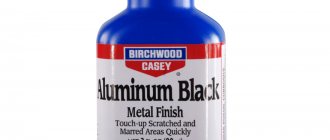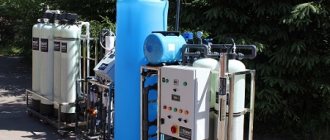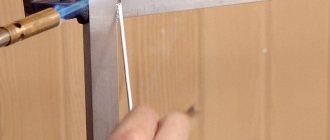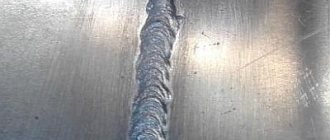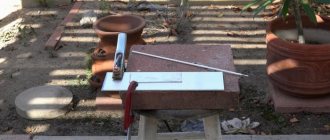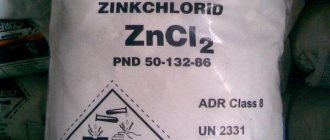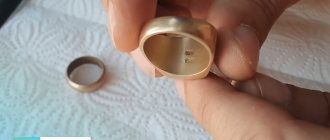Aluminum has been used in everyday life and industry for many years.
Thanks to its properties, a variety of products can be made from it. It is possible to melt aluminum at home, since it does not require high temperatures. To carry out such a procedure, you only need to know the properties of the metal.
After reading the article, you will learn how to melt aluminum at home - step-by-step instructions.
- 1 Characteristics
- 2 Details 2.1 Technological process - video instructions
- 2.2 Heat sources used
- 2.3 Making a mold for casting - instructions
Characteristic
The melting point of materials is determined by their purity. Due to its lightness and good ductility, aluminum is suitable for various technological procedures. Under the influence of high temperatures, a reaction with oxygen occurs.
An oxide film appears on the surface of the metal, protecting it from oxidation and corrosion. During melting, aluminum changes its structure, so it needs a protective coating. With sudden cooling, additional internal stress and shrinkage appear.
Some properties
Mechanical properties
The manufacturing technology of an aluminum product determines not only its shape, but also the microstructure of its material. In turn, the microstructure determines the properties of the product.
Some properties of aluminum depend slightly on the chemical composition and manufacturing technology. Examples of such characteristics are:
- Young's modulus (70 GPa),
- density (2700 kg/m3) and
- coefficient of linear thermal expansion (24×10-6 m/(m K).
Most other properties are very sensitive to the material's microstructure and chemical composition. These properties fall naturally into four categories:
- strength, ductility and formability - volumetric properties;
- fatigue strength and fracture toughness are local properties;
- resistance to high temperatures and creep resistance – thermomechanical properties;
- corrosion resistance, wear resistance and surface quality - surface properties.
The chemical composition of the alloy, the method of forming the product (casting, hot rolling, cold rolling, pressing, forging) and heat treatment all together determine the microstructure, and the above properties, in turn, depend on the microstructure.
The designer of an aluminum product or part must be familiar with the laws of these dependencies. He must consider the microstructure of the product material as an important part of the design. This will give him the opportunity to “order” from metallurgists the most suitable aluminum alloy with the optimal microstructure.
Table 1 – Density and elastic modulus of various industrial metals [4]
Table 2 - Comparison of the physical properties of deformable aluminum alloys with the corresponding properties of pure aluminum 99.99% (in square brackets - digital designations of alloys) [4]
Melting temperature
The melting point of aluminum is very sensitive to its purity. The melting point of ultra-pure aluminum 99.996% is 660.37 °C. With an aluminum content of 99.5%, melting begins at a temperature of 657 °C, and with an aluminum content of 99.0% - at 643 °C.
Aluminum corrosion
Aluminum resists corrosion in the form of constant oxidation, which in steels is called rusting. A fresh aluminum surface instantly reacts with oxygen and forms a strong, inert film on the aluminum product just a few nanometers thick. This film blocks further oxidation of aluminum. Additionally, unlike a layer of rust on steel, this film does not peel off in flakes to expose a fresh surface for oxidation. On the contrary, any scratch on aluminum instantly heals itself.
Details
Technological process - video instructions
A refractory container (crucible) is used to heat the metal.
Products are used from materials such as steel, porcelain, corundum, cast iron. At home, a container made of a wide iron pipe or a ready-made crucible is used. To make it, you only need a grinder and a welding machine. The volume of the crucible can be different and is selected individually; it heats up evenly. The metal must be crushed and melted during heat transfer. The melting point must be reduced before heat treatment in order for the state of the metal to change more quickly. To do this, it is crushed into small parts. This is often followed by oxidation or combustion. Aluminum oxide is formed, which changes its state at higher temperatures. This substance is removed after remelting the metal along with the rest of the slag.
REFERENCE! When melting aluminum at home, you must avoid getting liquid into the crucible. This is because the evaporation of water can cause an explosion. Therefore, before lowering the metal into the crucible, you need to make sure it is completely dry.
Mostly aluminum wire is melted. To do this, it is divided into pieces with scissors, and then compressed with pliers. This method prevents the metal from being exposed to oxygen. If you do not plan to obtain high-quality parts, then grinding raw materials is not necessary.
If you need to produce molten aluminum at home, you will have to model the casting technology yourself. The material must first be cleaned of dirt, slag and impurities. Large workpieces must be divided into several small ones. Casting is carried out according to the instructions; the most convenient option is used for melting. Slag must be removed from the surface of the fluid substance. Molten aluminum is poured into a mold, which must be broken after the metal has solidified.
Heat sources used
In order to melt aluminum at home, you can use:
- Melting aluminum in a muffle furnace, which can be done independently. This method is very effective and allows you to quickly convert the metal into liquid form.
- Blowtorch. It can be used to melt small amounts of aluminum.
- Torch - rarely used.
The hearth is made of bricks, and the frame is made of a metal container. On one side, a drill is used to make a hole for oxygen supply. A hair dryer, vacuum cleaner or other similar device is connected to a metal tube. The crucible is placed in the hearth after the fire has been lit. For better heat treatment, the coals can also be placed on the sides. To avoid losing heat, you can make a lid, leaving a hole for the smoke to escape. It is not worth making a furnace if the metal needs to be melted only once.
Melting aluminum on a gas stove also takes place. An ordinary gas stove can heat metal to the required temperature. Small pieces of aluminum will melt in about half an hour.
A tin can is usually used as a crucible. The jar is placed in another jar so that the gap between the two is about one centimeter. This is necessary for uniform temperature distribution. In the larger jar, you need to make several holes to provide fire access. The diameter of these holes should be 3-4 cm in diameter. In this case, the divider on the burner does not need to be removed. In this way, you can achieve uniform heating of the aluminum can. The larger jar is covered with a lid to prevent heat from escaping.
Making a mold for casting - instructions
If you need to do something simple, then making a special mold is not required; the metal can be poured onto a steel sheet.
If the product is more complex, then you need a mold that can be made from the following materials:
- - clay;
- - plaster;
- - liquid glass;
- - sand;
- - coal ash.
There are two ways to pour the alloy into a mold - open and closed.
Open is the easy way. The metal that has been melted is poured into an ordinary container, cup, tin can, and so on. After the alloy has cooled, the blank is removed from the container. If it doesn't matter what shape the metal object will be, leave the aluminum on a durable surface.
Forming elements are used for complex castings, when the product must meet specified parameters. In open pouring, silica is often used. The item is made from two containers containing compacted earth. The silica pieces are compressed and a casting model is placed between them. This way you get a clear imprint of the desired part. The model is removed, and hot aluminum is poured into the mold. With the closed casting method, river sand is taken and mixed with liquid glass.
For one-time casting, you can use plaster. Models are made from foam plastic or paraffin.
IMPORTANT! The use of these materials is only possible in an open space with good air access.
The foam is not removed from solid plaster, but is filled with molten aluminum. Its combustion products are harmful to human health.
Aluminum alloys
What is aluminum alloyed with?
Pure aluminum has very low strength and its use as a structural material is very limited.
When other elements—alloying elements—are added to aluminum, it increases its strength through various strengthening mechanisms.
Aluminum, in principle, can be alloyed with most metal elements. However, only a few of them have sufficient solid solubility to be major alloying elements.
The most important alloying elements of aluminum are:
- copper;
- manganese;
- magnesium;
- silicon and
- zinc.
At the same time, a significant number of other elements have a noticeable effect on improving the properties of aluminum alloys. They are added in small quantities. These elements include chromium, manganese and zirconium, which are used mainly to control grain structure.
Maximum solubility of alloying elements in aluminum is usually, but not always, achieved at the eutectic temperature. The solubility of alloying elements in solid aluminum decreases with decreasing temperature. This change in solubility in solid aluminum is the basis for the strengthening of aluminum alloys through the aging mechanism.
Where does iron come from in aluminum?
All industrial alloys contain approximately 0.1 to 0.4% iron (by weight). Generally, iron in aluminum alloy is considered an impurity. Its content depends on the source ore and the electrolysis technology used for its smelting. Sometimes iron is added deliberately to give the material special properties, for example, up to 1% in alloys for making aluminum foil.
What are additives in aluminum for?
In combination with one or more primary alloying elements, additional elements are often used:
- bismuth,
- boron,
- chromium,
- lead,
- titanium and
- zirconium.
These elements are usually used in small quantities, usually up to 0.1%. However, in some aluminum alloys the content of boron, lead and chromium can reach 0.5%. Thanks to these small additions, the alloys obtain the necessary properties for specific conditions, such as good fluidity during casting, high quality machining, heat resistance, corrosion resistance, high strength
Aluminum alloy categories
It is convenient to divide aluminum alloys into two main categories:
- casting alloys and
- wrought alloys.
In each of these categories, further division is based on the main mechanism that is responsible for the formation of their properties - thermally hardenable alloys and thermally non-hardening alloys. Alloys of the last group obtain their final properties as a result of deformation treatment - cold hardening. Therefore, sometimes they are called more positively - strain-hardened or even “cold-worked”.
About alloys 6060, 6063, AD31
The alloys of the 6xxx series - aluminum alloys alloyed with magnesium and silicon - rule the world in the production of aluminum profiles - about one percent each. The European standard EN 573-3 has about 30 of them. Of these thirty alloys, aluminum alloys are the most widely used:
- 6060 and
- 6063 and also
- 6005A,
- 6061 and
- 6082.
aluminum profiles in the world are made from these five alloys .
Figure 7 – Popular aluminum alloy 6xxx series
Foreign aluminum alloys
Currently, the generally accepted designation system for aluminum alloys was introduced by the American Aluminum Association (AA). Both international ISO standards and European EN standards adhere to this system.
Each wrought alloy is designated by a combination of four numbers, for example, 2024. The first number indicates the series of alloys. Each of the seven series of alloys has one or two main alloying elements. For example, in the case of alloy 2024 from the 2xxx series, this is copper.
The designation of casting alloys also consists of four digits, but between the third and fourth digits there is a dot, for example, 380.0.
In Russia and other CIS countries, along with the international designation system, the traditional alphanumeric designation system for aluminum alloys, for example, AD31, is widely used.
Possible mistakes and ways to avoid them
Gypsum molds are very convenient and highly sensitive to moisture. Conventional drying does not remove moisture, so the quality of the casting becomes worse. To achieve complete drying of the plaster mold, you will have to wait several days. Aluminum must be heated over a fire until it is poured into the mold, so that you can then distribute it over the mold before it hardens.
Do not use water to cool the product. This is due to the fact that under the influence of water, cracks appear - the internal structure of the substance is disrupted.
Precautionary measures
To work with molten aluminum, you must use personal protective equipment. All exposed areas of the body, hands, and face must be protected.
REFERENCE! It is best to use welding gloves; they can withstand temperatures of more than 600 0C. This means of protection is the most basic, since the possibility of molten metal getting on your hands is very high.
It is also better to use goggles and a mask to avoid hot elements coming into contact with your face and eyes. To protect the entire body, you can find a metallurgist suit that has high fire resistance. When cleaning aluminum welding flux, a chemical respirator is used.
